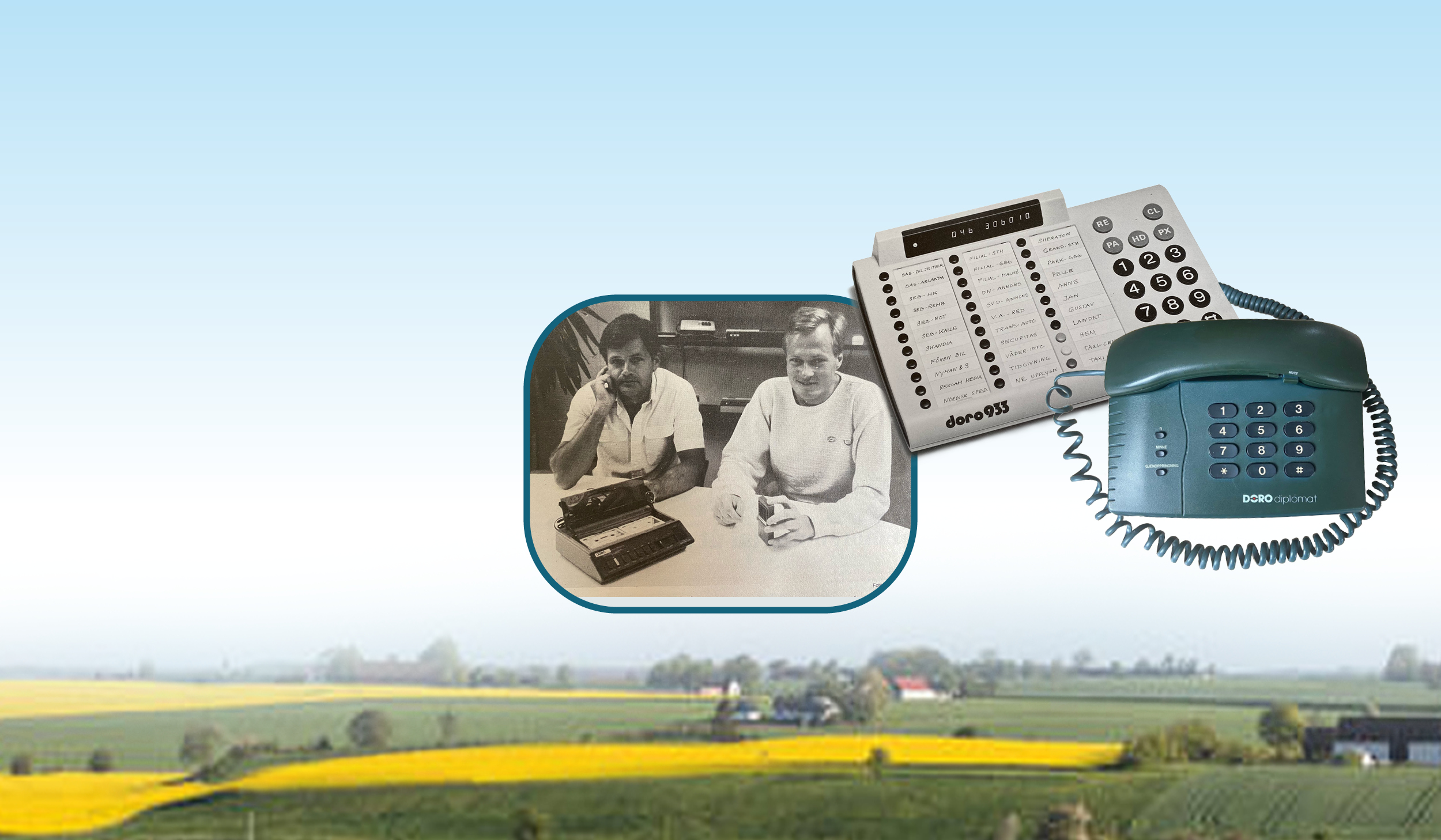Menu

1980 - 1990
The eighties had arrived and were getting off to a thrilling start. In the summer of 1980, Björn Borg defeated John McEnroe in an epic final to win his remarkable fifth straight Wimbledon title. In Sweden, Internovator would soon become Doro, and with the competition for answering machines heating up, it was game on!
Claes and Olle now had a growing range of “DORO” answering machines, a label their supplier in San Francisco had created from the names of his sons, Donald and Robin. They also had plenty of competition, particularly from Esselte, Sweden’s biggest office supply vendor. The answering machine market was hot, and others wanted a piece of it. To simplify marketing, the company let the market know towards the end of 1981 that, “We have changed names from Internovator AB to Doro AB, so now we have the same name as our answering machines.” But a name change couldn’t prepare them for what was coming.
The dollar problem
As far as Swedes were concerned, one US dollar cost 5.17 kronor and there was no reason to think otherwise. It had been fixed at that rate from 1950 to 1970 and was even printed in school textbooks. During the seventies, however, it did begin to slide gradually downwards and in 1980 one USD cost 4.23 kronor.
The problems started after that. The dollar began to rise and would double in value over the next four years. Like many businesses, Doro was unprepared. As a result, the company went bust at one point during that time, and Claes and Olle parted ways. Claes picked up the pieces and persuaded one employee, Allan Mårtensson, to step in as part owner. Doro was back in the game.
Meanwhile, MTV had just begun changing the face of pop culture, IBM had introduced its first PC, and Nintendo was about to make Pac-Man, Donkey Kong and Super Mario all the rage. Developments in microelectronics were speeding up and would usher in an exciting new era.
More legs to stand on
Already before their reboot, Doro had actively been adding other types of products, including copiers and dictation systems, to have more legs to stand on than just answering machines. They had even tried marketing a product called TELENOTE that was capable of sending pictures of handwritten messages scribbled on the device’s writing pad.
“Another nearly forgotten product that I was especially happy about was ‘Nummersändaren’,” says Claes, recalling the novel automatic dialler that he helped develop. “I had written a specification stating exactly how I wanted it to work. Say, for example, you called a number and it was busy. You just pushed a button and the device would save it and re-dial it once every minute until someone answered. It could remember up to 400 names and numbers and was a huge help to people who used the phone for sales.”
Doro’s was not the only dialler on the market, but according to Claes and Allan theirs could do things that no others could, like identifying a contact as soon as one began typing the first letters in a name. It had also been designed by the legendary industrial designer, Carl-Arne Breger, known for designing “Diavox”, the touch-tone successor to the standard rotary phone sold by Televerket.
Phones next… finally!
By the mid-eighties, with telecom deregulation happening elsewhere and the development of telephones and other tele equipment advancing rapidly, pressure was on to let other vendors besides Televerket sell phones in Sweden. Finally, in November of 1985, the monopoly on corded phones came to an end. At first consumers were allowed to buy phones from others, but they weren’t allowed to plug them into the telephone network. Eventually even that hinder was removed and Doro was soon selling a variety of phones sourced in Asia.
“Once we knew we would be allowed to compete with Televerket’s corded phones,” says Claes, “I travelled to Taiwan and Hong Kong with a technician to meet potential suppliers and let them know what we were looking for. We were able to get hold of several models fairly quickly, and before long we had fifteen different models to Televerket’s one.”
New ownership
By the end of the decade, Doro was also selling faxes and cordless phones and, along with Philips, was the first to enter the newly opened up PBX market. “Our cordless phones and exchanges both turned out to be a big deal for Doro heading into the nineties,” says Allan.
The company was now growing so fast that a development company controlled by the Wallenberg family showed interest in buying it. Instead, in 1990, Claes, Allan and a handful employees who had become minority owners agreed to sell everything to the conglomerate Midway Holding, led by the well-regarded entrepreneur and industrialist, Sten K Johnson.
Not long after, three things would happen that would be of major significance for Doro. But that’s another story.
Copyright © 2025 Doro AB. All rights reserved